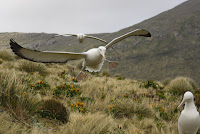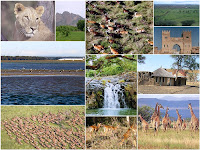Safari Notes: Nsazi Island
Nsazi Island is just one of the 3,000 or so islands spread over the 68,000 square kilometers Lake Victoria - Africa's largest lake, the largest tropical lake in the world, and the second largest fresh water lake in the world. Lake Victoria basin is 'used by communities and industries as a source of food, energy, water and transport. The lake is also a sink for human, agricultural and industrial waste. The Lake provides employment for up to 30 million people.' And Lake Victoria is slowly but certainly dying! Dying of pollution.
'The causes of rising pollution levels in the Lake are as many as they are diverse and each of the three East African nations is culpable. The Lake has for along time been a sink to excessive nutrients and untreated effluent that have led to fish die-offs, algal blooms and the spread of hyacinth, a ferocious water weed. Although mostly eradicated now, the remnants of hyacinth on Lake Victoria deplete dissolved oxygen, sunlight and are an obstacle to water transport. Along the shoreline, hyacinth provides habitat for malaria mosquitoes and snails which harbor bilharzia parasites.' Uganda, Kenya and Tanzania - all contribute to the massive misuse and pollution of the lake. 'More than anything else, it is discharge of untreated effluent and the lack of enforcement of discharge standards that are killing Lake Victoria.'
Nsazi Island and many other islands on the Lake, are magnets for Uganda's unemployed. Nsazi village is a very good reflection of what the Lake's islands have become. 'The village is a collection of mud and woven-branch huts separated by muddy lanes, with a few houses built of wooden plank and even fewer sitting on concrete foundations.' The Lake's water is used for drinking and cleaning, without sanitation. There are now about 2,000 people on Nsazi; as recently as 1998, there were only about 600 people there. Many, think of islands on Lake Victoria as a tourist paradise, some are. But islands, like Nsazi are now over crowded, very poorly served with social and physical infrastructures and are only contributing more to the rapid destruction of Lake Victoria and its resources. The Nile Perch has devoured hundreds of native fish species in the Lake. But it's humans, now, who are rapidly destroying Lake Victoria.
'The causes of rising pollution levels in the Lake are as many as they are diverse and each of the three East African nations is culpable. The Lake has for along time been a sink to excessive nutrients and untreated effluent that have led to fish die-offs, algal blooms and the spread of hyacinth, a ferocious water weed. Although mostly eradicated now, the remnants of hyacinth on Lake Victoria deplete dissolved oxygen, sunlight and are an obstacle to water transport. Along the shoreline, hyacinth provides habitat for malaria mosquitoes and snails which harbor bilharzia parasites.' Uganda, Kenya and Tanzania - all contribute to the massive misuse and pollution of the lake. 'More than anything else, it is discharge of untreated effluent and the lack of enforcement of discharge standards that are killing Lake Victoria.'
Nsazi Island and many other islands on the Lake, are magnets for Uganda's unemployed. Nsazi village is a very good reflection of what the Lake's islands have become. 'The village is a collection of mud and woven-branch huts separated by muddy lanes, with a few houses built of wooden plank and even fewer sitting on concrete foundations.' The Lake's water is used for drinking and cleaning, without sanitation. There are now about 2,000 people on Nsazi; as recently as 1998, there were only about 600 people there. Many, think of islands on Lake Victoria as a tourist paradise, some are. But islands, like Nsazi are now over crowded, very poorly served with social and physical infrastructures and are only contributing more to the rapid destruction of Lake Victoria and its resources. The Nile Perch has devoured hundreds of native fish species in the Lake. But it's humans, now, who are rapidly destroying Lake Victoria.


